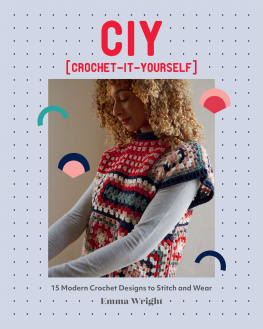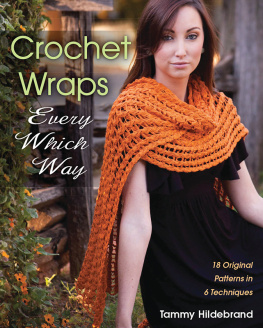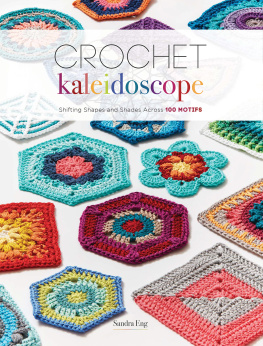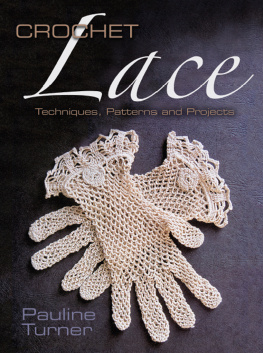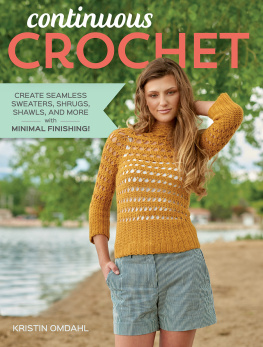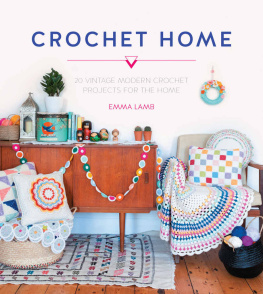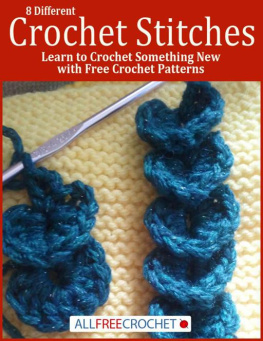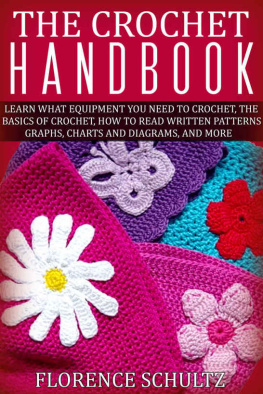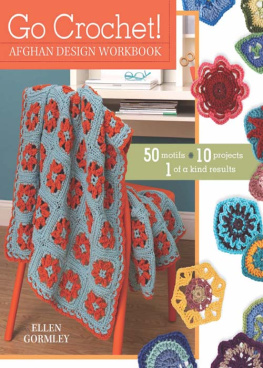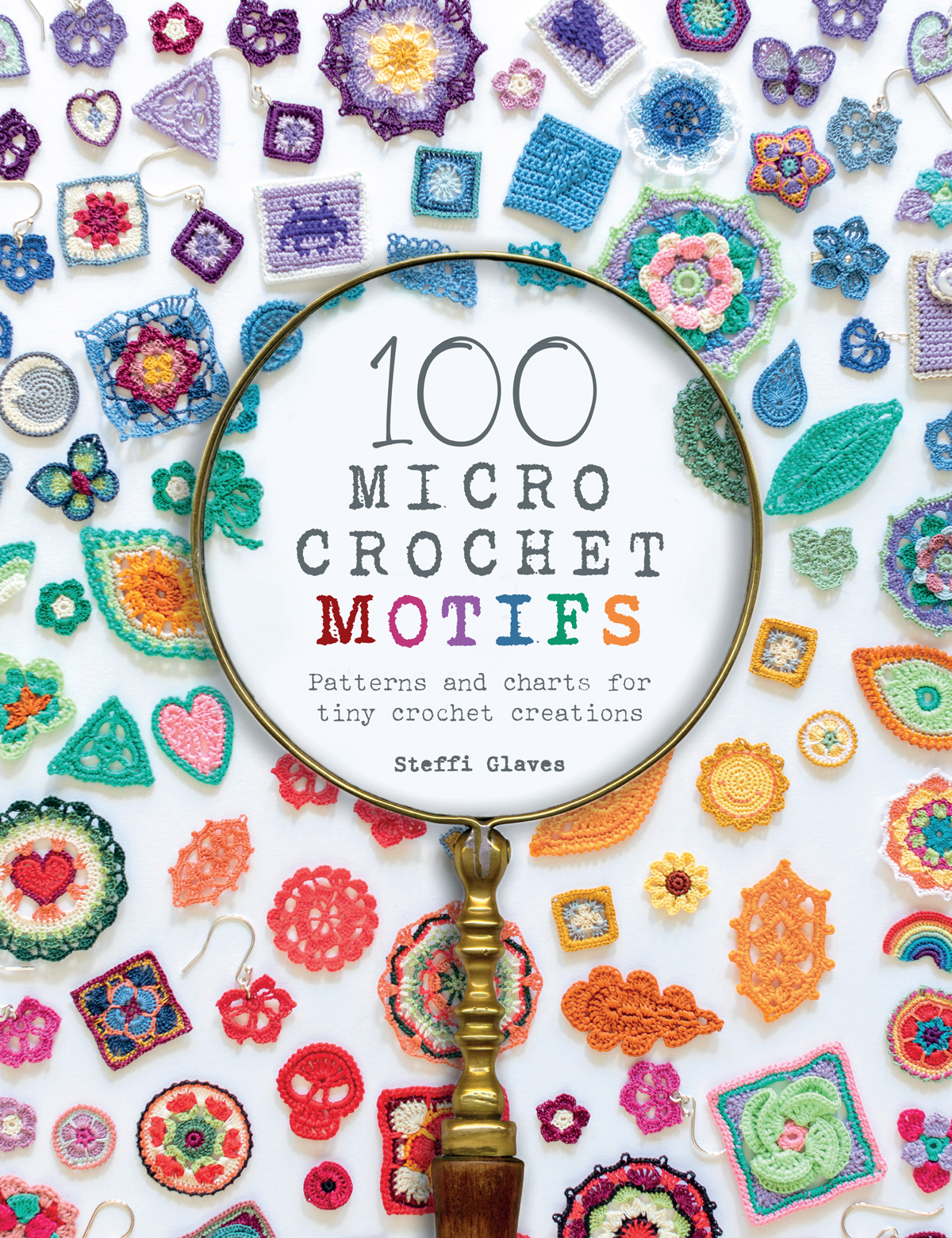Welcome
Tiny objects are fascinating. From dollhouse miniatures and model railways, to jewellery charms and tiny food, anything that can shrink to fit in the palm of your hand can instantly become more precious with new possibilities for different applications. The same can be said for crochet, the classic granny square transforms into something unique and special when reduced to the size of a postage stamp.
This book, 100 Micro-Crochet Motifs, demonstrates how to do just that with your own crochet. With 10 themed chapters and a fun project for each one, there is a wide range of tiny and beautiful crochet pieces that can be used in so many ways.
You will learn the central skills needed for micro-crochet, such as how to hold the thread and hook, reading a crochet chart, special edgings, blocking and stiffening. Alongside that, you will also learn about the tools and types of threads to use, and the special techniques needed for creating the motifs in this book, such as incorporating wire, creating tiny keepsake bags and making your own jewellery. There are simple motifs with 2 to 4 rounds of crochet and more challenging ones with more rounds, colour changes and different stitches some of them are 3D amigurumi.
These motifs are not just for micro-crochet: scale them up with standard DK yarn and a larger crochet hook for bigger motifs which have their own charm, and use them for bunting and bouquets. The envelope project in the Blanket Squares chapter is a great example of this as it involves using the same granny square design to make a miniscule pendant or a larger belt purse.
This book is for anyone who already has a grasp of the basic crochet stitches and techniques, and wishes to explore making jewellery, accessories, appliqus, or just tiny things for the sheer joy of it.

TOOLS AND MATERIALS
Lets start by looking at the threads and yarns used in this book.
There are lots of different types of thread that are suitable for micro-crochet, varying in thickness and application, so you can slowly transition from crochet using standard yarns and hooks to using finer threads and hooks.
Here are the main things to look out for when purchasing your own threads.
Thickness/gauge number
Threads specifically made for fine crochet have a number to indicate the thickness or gauge. The higher the number, the finer the thread. Most common gauges are 10, 20, 30, 40, 50, 60, 70, 80 and 100. I use sewing cotton more than crochet cotton and use the equivalent of gauge 80 with a 0.5mm (12 steel) hook for most of my work. Common sewing threads will not have this numbering system.

Reduce thread weight and crochet hook size gradually to get used to working at a micro scale.
Mercerised
You will often see this on packaging for crochet threads. Mercerised cotton means that it has undergone a chemical and heat process to give it a lustre.
'Fibre halo' is particularly important if you are looking at sewing threads. Put a thread strand up to the light do you see a halo of fibres around the main core of the thread? Most threads will have this, but too much will reduce the appearance of definition in the stitches of your work and make it prone to tangling.
Strength
Even the finest of threads can be strong. If it snaps easily, then I wouldnt recommend crocheting with it. There is nothing worse than achieving the perfect magic ring, only for the tail end to snap off as you are drawing it to a close! This will not usually happen with specific crochet threads but there is a risk with sewing threads.
Colour range
When looking at different ranges and brands of threads consider the following does this brand have a range of colours that appeal to you? Can these threads be combined easily with others you have at home? There is nothing wrong with combining thread brands, though major differences in thread thickness may affect the overall look of your crochet pieces.
Thread classification
EMBROIDERY THREADS
These are great threads to start with as they are cheap, available in many colours, may often be in your existing craft stash and they can be stranded down to desired thicknesses. Pearl (or perl) cotton can also be used for embroidery and crochet. It has a subtle sheen and silky feel.
GTERMANN TOP STITCHING THREAD
This is a polyester thread which is great for trying out micro-crochet for the first time. Its proper purpose is for strong stitching on heavy duty fabrics such as denim. It is readily available in shops and is low in cost.
The hooks I use for this type of thread are a 0.75mm (1 4/10 steel) hook especially for amigurumi but a 0.9mm-1mm (14/8 to 12/6 steel) can also be used.
GTERMANN HAND QUILTING COTTON
This is a very lightly waxed cotton which gives fantastic definition to the stitches and a little more strength. It is smooth, with a subtle sheen and low friction properties, which makes it great for tiny magic rings and it can be repeatedly frogged.
Though it is slightly expensive for 200m, a little goes a long way, and the threads are wound on a spool which have a hidden compartment for needles, making it suitable for travel without tangling.
The colour range is limited, compared to specialised crochet cottons, but it is more readily available in local haberdasheries. Do note that this thread is not suitable for sewing machine use.
I use a 0.5mm (12 steel) hook, but a 0.6mm (12 steel) hook can also be used.
CONNECTING THREADS QUILTING COTTON
This is an American brand and they have a wide range of colours that are available to order from their website. They are good value for money as they consist of 1200m per spool. They are great for making tassels and incorporating them into jewellery.
I use a 0.5mm (12 steel) hook for these threads.
DMC has the widest range of crochet cottons and gauges, useful for those who want to gradually go down the threads and hook sizes.
Special Dentelles 80 is a fine 3-ply lace-making crochet cotton that has been combed, singed by flame and twice mercerised. There are 72 colours to choose from with lots of bright as well as subtle shades, together with a small range of colour gradients that change from white to a colour. They are wound on adorable little balls but they can unravel easily so I recommend storing them with bands or in individual bags. They are good value for money, but not so common in local crafts shop. They can, however, be ordered directly from the DMC website.


